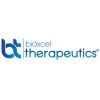Dexmedetomidine in the Treatment of Agitation Associated With Schizophrenia and Bipolar Disorder (SERENITY III)
Agitation,Psychomotor, Bipolar I Disorder, Bipolar II Disorder

About this trial
This is an interventional treatment trial for Agitation,Psychomotor
Eligibility Criteria
A patient may enroll in only one part of the study; either Part 1 or Part 2. Inclusion Criteria: Male and female patients between the ages of 18 to 75 years, inclusive Patients who can read, understand and provide written informed consent. Patients who have met Diagnostic and Statistical Manual5/5-Text Revision criteria for bipolar I or bipolar II disorder, schizophrenia, schizoaffective or schizophreniform disorder. Patients who, in the opinion of the Principal Investigator, are in good general health before study participation based on a detailed medical history, a physical examination, a 12-lead ECG, a blood chemistry profile, hematology, and urinalysis. Participants who agree to use a medically acceptable and effective birth control method Part 1 only Patients who are judged to be clinically agitated at Screening and Baseline with a total score of ≥ 14 on the 5 items (poor impulse control, tension, hostility, uncooperativeness, and excitement) comprising the PEC. Patients with a score of ≥4 on at least 1 of the 5 items on the PEC at Baseline. Part 2 only Patients have had at least three clinical presentations of agitation requiring an intervention in the past three months prior to Screening Patients who are receiving stable treatment for the last 3 months prior to Screening for the underlying primary diagnosis and who are expected to remain on stable treatment for the duration of the study Patients who manage agitation episodes with as needed (PRN) medication The patient has an Informant who can read, understand, and provide written informed consent and understand and follow the study procedures Exclusion Criteria: Patients with serious or unstable medical illnesses. A history of agitation episodes due to substance use. A diagnosis of antisocial personality disorder, borderline personality disorder, or narcissistic personality disorder that predated the diagnosis of schizophrenia or bipolar disorder Patients who are judged to be at significant risk of suicide Female patients who have a positive pregnancy test at Screening or Baseline, or are breastfeeding. Patients currently treated with alpha-1 noradrenergic blockers (terazosin, doxazosin, tamsulosin, alfuzosin, or prazosin), alpha-2 adrenergic agonists, or other prohibited medications. Patients with hydrocephalus, seizure disorder, or history of significant head trauma, stroke, transient ischemic attack, subarachnoid bleeding, brain tumor, encephalopathy, meningitis, Parkinson's disease, or focal neurological findings. History of syncope or other syncopal attacks, current evidence of hypovolemia, or orthostatic hypotension Patients with laboratory or ECG abnormalities considered clinically significant by the Investigator Patients who have received an investigational drug within 30 days before the study start Patients who have previously received BXCL501 via prescription (under the trade name IGALMI™) or received BXCL501 in an open-label clinical trial Patients considered by the Investigator to be unsuitable candidates for receiving dexmedetomidine or considered to be unsuitable for participating in the study for any reason. Part 1 only Patients with agitation caused by acute intoxication, including identification of alcohol by breathalyzer or drugs of abuse (except for THC) during urine screening. Use of benzodiazepines or other hypnotics or antipsychotic drugs in the 4 hours before study treatment. Patients who have previously received BXCL501 in a clinical trial
Sites / Locations
- BioXcel Clinical Research Site 112Recruiting
- BioXcel Clinical Research Site 119
- BioXcel Clinical Research Site 113Recruiting
- BioXcel Clinical Research Site 128
- BioXcel Clinical Research Site 110Recruiting
- BioXcel Clinical Research Site 108Recruiting
- BioXcel Clinical Research Site 117Recruiting
- BioXcel Clinical Research Site 121Recruiting
- BioXcel Clinical Research Site 123
- BioXcel Clinical Research Site 104Recruiting
- BioXcel Clinical Research Site 133
- BioXcel Clinical Research Site 114Recruiting
- BioXcel Clinical Research Site 129
- BioXcel Clinical Research Site 131
- BioXcel Clinical Research Site 124
- BioXcel Clinical Research Site 134
- Bioxcel Clinical Research Site 106Recruiting
- BioXcel Clinical Research Site 107Recruiting
- BioXcel Clinical Research Site 109Recruiting
- BioXcel Clinical Research Site 130
- BioXcel Clinical Research Site 103Recruiting
- BioXcel Clinical Research Site 118
- BioXcel Clinical Research Site 105Recruiting
- BioXcel Clinical Research Site 101Recruiting
- BioXcel Clinical Research Site 122
- BioXcel Clinical Research Site 102Recruiting
- BioXcel Clinical Research Site 125
- BioXcel Clinical Research Site 127
- BioXcel Clinical Research Site 120
- BioXcel Clinical Research Site 132
- BioXcel Clinical Research Site 126
Arms of the Study
Arm 1
Arm 2
Arm 3
Arm 4
Experimental
Placebo Comparator
Experimental
Placebo Comparator
Part 1: 60 mcg of BXCL501
Part 1: Matching Placebo
Part 2: 80 mcg of BXCL501
Part 2: Matching Placebo
Sublingual film containing 60 Micrograms Dexmedetomidine
Sublingual Placebo film
Sublingual film containing 80 Micrograms Dexmedetomidine
Sublingual Placebo film
Outcomes
Primary Outcome Measures
Secondary Outcome Measures
Full Information
1. Study Identification
2. Study Status
3. Sponsor/Collaborators
4. Oversight
5. Study Description
6. Conditions and Keywords
7. Study Design
8. Arms, Groups, and Interventions
10. Eligibility
12. IPD Sharing Statement
Learn more about this trial
